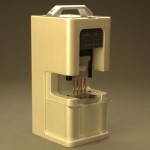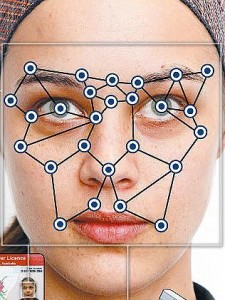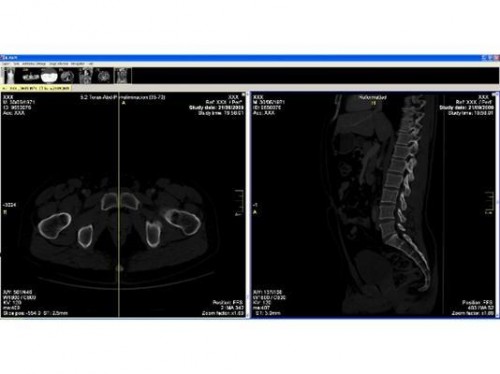
A new DNA technology can extract your DNA in the same time it takes to microwave popcorn
Say you commit a crime (despite your upstanding moral character, perhaps that Breaking Bad DVD box set was too hard to resist). You stole it, the cops arrested you, and now they want to see if your DNA matches the DNA found at the scene of the crime.
A new device created by NanoFracture and engineers from the University of Washington can extract DNA from bodily fluid samples in two minutes, a tenth of the time it took previous technologies. A simple mouth swab from the supposed criminal is inserted into the device, where microscopic probes touch the saliva and apply an electric field. The electric field attracts particles in the saliva to the probe tip, and the size of the probe determines what size particles stick to the surface. These micro- and nanoscale tips are designed for DNA size molecules, so larger particles swerve away. After two minutes, the DNA is separated and purified from the sample and ready for analysis, at which point the authorities may be able to prove that you are guilty (and have a Breaking Bad addiction).
Kiss and tell: You kiss it, we can tell
Watch where you put those lips, because forensic scientists can now identify lipstick brands from the scene of the crime. This information is surprisingly useful because people are not aware of how much comes in contact with their mouths: cups, cigarettes, napkins, and sometimes the victim’s lips. Matching lipstick can place suspects at the crime scene or prove physical contact between the suspect and the victim.
Previous methods of lipstick analysis were destructive and therefore not used very often. Researchers from the University of Kent have now developed Raman spectroscopy, a technique that can analyze lipstick through the transparent layers of an evidence bag without compromising the piece of evidence. Raman spectroscopy detects the laser light scattered by a material to identify it. The vibrational energy of the lipstick molecules scatters some of the incoming light at altered wavelengths. The microscope captures these altered wavelengths to create a Raman spectrum, which is a characteristic vibrational fingerprint that can be matched to the Raman spectra of known lipsticks.

Fast food felonies: Unhealthy criminals are more likely to get caught
As if you really need another reason to eat healthy, apparently you are more likely to get caught if you eat processed food. Sweaty fingerprints with a high salt content leave a corrosive impression on metal, and salty sweat comes from unhealthy eating (potato chips, soda, chicken tenders — basically all the good stuff).
Even after metal objects are wiped clean of fingerprints, new forensic fingerprinting technologies developed at the University of Leicester can identify corrosive impressions from the salty sweat that remains on metal surfaces. Before now, fingerprints were detected using deposits left by the finger, which are easily wiped away. But since corrosion is permanent, fingerprints on metal evidence — doorknobs, gun handles, even bullets retrieved from corpses — cannot be erased.

Forensic scientists can identify you from your photo, even if it’s not your best angle
Facial recognition is wonderful for matching two faces that are looking directly at the camera. Unfortunately these comparisons tend to be difficult because facial recognition software compares mug shots with security camera footage, which often shows faces at different angles.
That is why biometrics researchers from Florida Atlantic University developed a new computer algorithm to construct a three-dimensional face from a two-dimensional image. This computer algorithm uses lighting and viewing angle in the 2D image to create a 3D image. When both the mug shot and security camera footage are converted from 2D to 3D, facial recognition is able to match faces that previously were incompatible.

Hips don’t lie: Pubis determines age and sex of corpses with 95 percent reliability
Oftentimes forensics investigators need clues from the corpse to catch the killer, so identifying the corpse is very important. When corpses are mutilated or aged, the age and sex of the corpse is no longer obvious, and it turns out the pubis, a pelvic bone located in the lower frontal region of the hips, is the best way to track down that information.
Researchers from the University of Granada created a new computing system that analyzes the pubis region of corpses. The system divides the pubis into four regions and then compares those regions to a database of known structures organized by age and sex. The new system can determine the age and sex of the corpses correctly 95 percent of the time, apparently especially well for the corpses of 50-year-old men.
